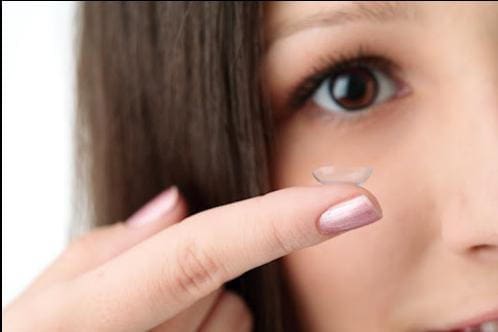
Over one-quarter of American children aged two to 17 wear some sort of corrective lens. While many of these kids wear glasses as a naturally convenient form of vision correction, others opt to wear contact lenses. These tiny lenses present both significant advantages and potential health risks.
As a concerned parent, you may wonder whether your child can or should use contact lenses to correct a diagnosed refractive error, and how to make the contact lens experience as safe and beneficial as possible. If so, take the following four points into consideration as you schedule treatment for your child’s vision issue.
1. Contacts Offer Advantages Over Glasses
Not all kids feel comfortable or self-confident in glasses. Some school-aged children may feel naturally self-conscious about their appearance, fearing that glasses might provoke ridicule or social alienation. These kids may prefer lenses that can correct their vision without altering their looks or calling attention to a vision problem.
Contact lenses can also offer practical advantages in the rough-and-tumble world of school life. These small lenses might pop out from time to time, but they won’t break or deform as eyeglass frames can in an impact. They also eliminate the need for athletic kids to wear special safety glasses or goggles when playing sports.
2. Myopia Control Contacts Can Curb Nearsightedness in Kids
Many children with limited vision struggle with a condition called myopia, more commonly referred to as nearsightedness. In this kind of refractive
error, the eyeball assumes an elongated shape that prevents light from focusing at the retina, making distant objects appear blurry. Most myopia progression occurs during childhood.
Contact lenses can bring images into focus for individuals with myopia, hyperopia (farsightedness), and other such refractive errors. Better yet, specific types of lenses called orthokeratology (ortho-k) lenses or MiSight 1 Day lenses can actually slow the progression of myopia. When worn regularly, these lenses discourage eyeball elongation.
If your child has myopia, ask your optometrist about ortho-k or MiSight 1 Day lenses’ ability to curb myopia progression during the formative growing years. Myopia control in childhood can mean both clearer vision as an adult and less risk of the complications associated with severe myopia (such as glaucoma, retinal detachment, and cataracts).
3. Contact Use Requires a Certain Degree of Maturity
As a general rule, optometrists don’t usually prescribe contact lenses for kids under 12 years of age, recommending standard eyeglasses instead, although younger children occasionally are good candidates and do great with their contact lenses. The main reasons for this caution involve concerns about proper lens hygiene. Kids too young or immature to clean and care for contact lenses can give themselves eye infections.
The decision of whether to let your child wear contact lenses hinges on that child’s individual maturity, attention to detail, and willingness to care for their lenses properly. Make sure your child understands the importance of sterilizing the lenses, inserting them without the finger touching the eye, and not inserting them in irritated eyes.
4. You May Need to Help Your Child Get Used to Contacts
Contact lens users of all ages must get accustomed to inserting and removing contact lenses. This process can seem intimidating or even frightening to kids who can’t imagine putting any foreign object in their eyes. Fortunately, you can make this transition easier for your child until contact lens wear becomes second nature.
Your pediatric optometrist will explain the basics of contact lenses insertion and removal to both you and your child. You can then supervise your child’s early efforts by helping your child remain calm, avoid blinking during insertion, and check the lens’s orientation on the fingertip to make sure it faces the right direction.
Youth Dental & Vision can serve as your family resource for pediatric contact lenses, glasses, eye and vision exams, and even dental evaluations or treatments. Contact us for a consultation so our team can advise you on your child’s corrective vision needs and options.
